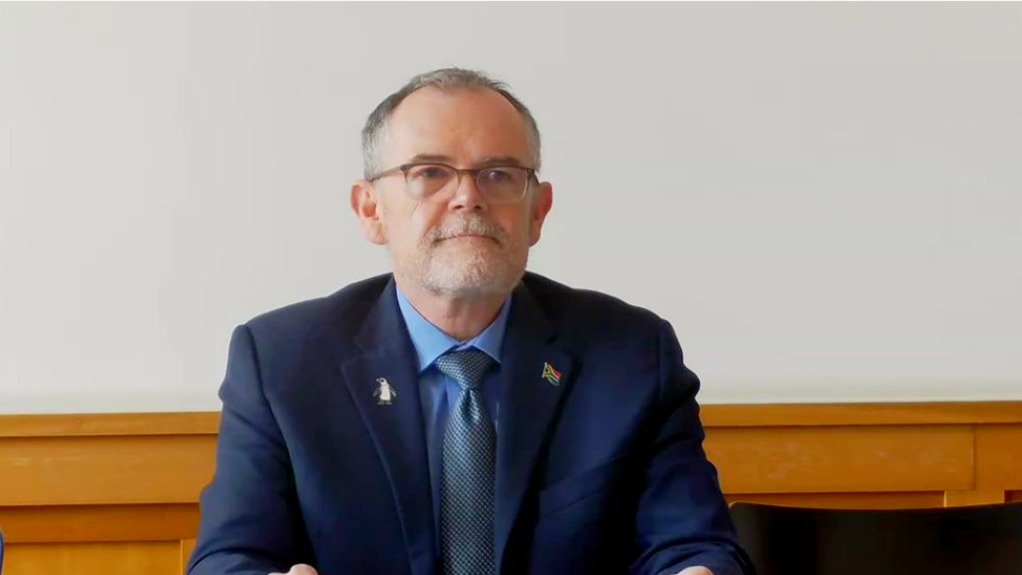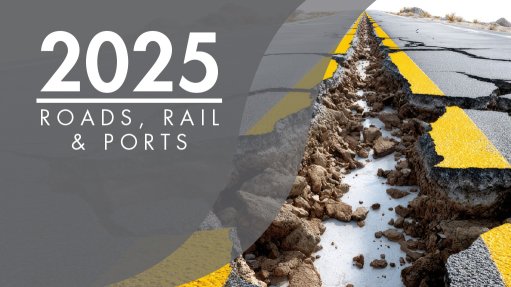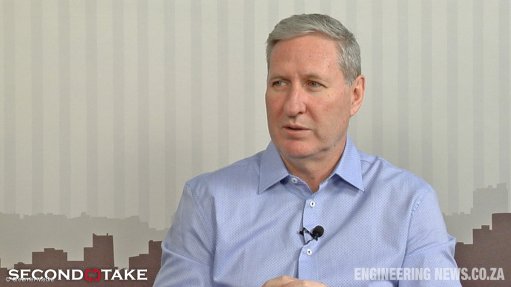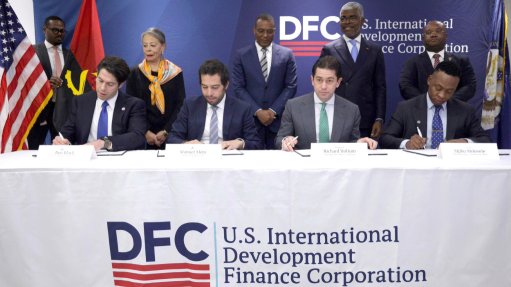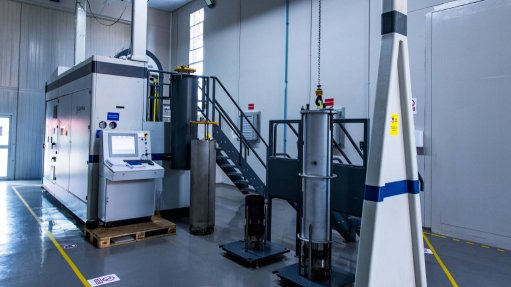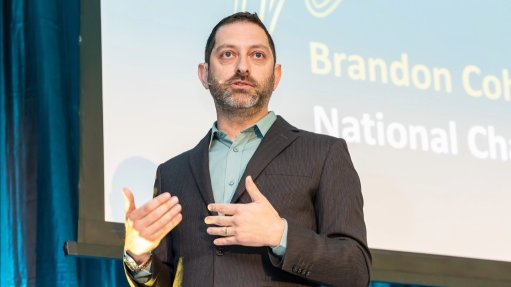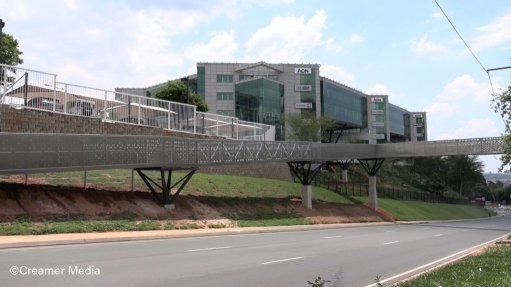DFFE obligated to ‘do more with less’ under latest budget
Forestry, Fisheries and the Environment Minister Dr Dion George has outlined how his department plans to spend its R9-billion allocation over the medium term expenditure framework between 2025 and 2028.
For 2025/26, the Department of Forestry, Fisheries and the Environment (DFFE) has allocated R2.8-billion towards environmental programmes, including the Working for Water, Working for Waste, Working for Fire and Working for the Coast programmes, targeting the creation of 70 000 jobs.
The year’s allocation marks DFFE’s lowest share of national appropriation since 2016/17. After adjusting for inflation, the DFFE has received R121-million, or 1.4%, less than the prior financial year and is being asked to do more with fewer resources.
National government’s consolidated spending is projected to grow from R2.4-trillion to R2.8-trillion in 2027/28.
George affirmed that the DFFE is focused on delivery and that nearly half of the department’s medium-term budget will be allocated to goods and services such as the Expanded Public Works Programme, implementing the Forestry Master Plan and rolling out a waste management strategy.
In turn, transfers and subsidies to public entities such as South African National Parks (SANParks) and the South African Weather Service will account for more than R5.5-billion of the medium-term allocation.
SANParks, for one, has provided more than 21 000 full time jobs through the Expanded Public Works Programme. The entity has also supported more than 3 000 small businesses and delivered 2 264 animals to emerging game farmers to ensure protected areas become engines of opportunity for surrounding communities.
George said in the inaugural budget speech of the DFFE as a standalone department that the global climate crisis was disrupting economies, ecosystems and lives, to which South Africa aimed to respond by advancing climate resilience, biodiversity protection and ocean governance.
The DFFE is driving three core national priorities through its medium-term framework: inclusive growth and job creation, poverty reduction and cost of living alleviation, and a capable and ethical developmental State.
“The DFFE is using every rand to protect ecosystems, grow green jobs and meet the urgent demands of climate adaptation, regulation and environmental justice,” George stated.
In respect of the 2025/26 budget, the DFFE will advance six priorities: climate change resilience, natural heritage preservation, fair industry practices, sustainable fishing, modernising regulatory frameworks to accelerate compliance and inspections, and becoming more financially disciplined.
On climate change, the DFFE is acting in accordance with the Climate Change Act, which serves as a whole-of-government response to the crisis. The DFFE will this year deliver new annual Nationally Determined Contributions, a revised Low Emissions Development Strategy and final Sectoral Emission Targets.
The department will also implement the Climate Change Adaptation Response Plan for vulnerable coastal regions.
Further, through the DFFE’s “KISS” initiative, it is focused on elevating three national icons – the Kruger National Park, Kirstenbosch Botanical Gardens and iSimangaliso Wetland Park – into engines of ecological protection, job creation, inclusive tourism and community empowerment.
George noted that the department’s revised National Biodiversity Economy Strategy would unlock more than 390 000 jobs and inject R127-billion into South Africa’s economy every year by 2036 through eco-tourism, bioprospecting and sustainable game meat production.
DFFE’s FILLER priority, which stands for Fair Industry for Lions, Leopards and Rhinos, is advancing ethical and sustainable management of these animal species that are both culturally significant and economically vital to South Africa.
This year the department will finalise an Elephant Heritage Strategy, which will enhance enforcement efforts against wildlife trafficking.
Moreover, George explained South Africa’s fisheries were lifelines for coastal and rural communities, hence the department’s Fishing for Freedom initiative that helps secure sustainable access for small-scale fishers and combat illegal harvesting that threatens biodiversity and food security.
DFFE is, in particular, fast-tracking signage, wreck removal, security and road markings at 12 proclaimed fishing harbours, expanding training in the small-scale fisheries sector and implementing co-management systems for nearshore fisheries.
Further, DFFE’s RESET initiative – or Regulatory Efficiency Strategy for Environmental Turbocharge – involves modernising the regulatory framework to accelerate compliance, improve coordination and enhance transparency. The DFFE is embedding the National Integrated Strategy to Combat Wildlife Trafficking into its operations, and ramping up inspections across sectors.
Lastly, in the face of the budget cuts and fiscal constraints, the DFFE is doubling down on financial discipline to ensure every rand unlocks value for people and the environment.
“Our proactive spending review, which was initiated in October 2024, has identified several cost-saving opportunities that can redirect resources toward high-impact environmental and conservation endeavours,” George said.
He has also mandated each branch of the department to explore new revenue streams, reduce unnecessary expenditure and secure sustainable financing.
What will also aid in these efforts are regulations to unlock the value of carbon credits, which are in the draft stage.
The regulations will lay the groundwork for monetising environmental assets under the DFFE’s portfolio and position the department as a national leader of environmental financing.
The DFFE has been engaging with international donors, private partners and philanthropic bodies to this effect. George confirmed the DFFE’s investment portal for the biodiversity economy had already earmarked 59 bankable projects for investment, which have led to $450 000 worth of green finance commitments.
The DFFE also plans to clear 326 081 ha of invasive alien species, rehabilitate 28 wetlands and achieve a 90% wildfire suppression rate.
Article Enquiry
Email Article
Save Article
Feedback
To advertise email advertising@creamermedia.co.za or click here
Comments
Press Office
Announcements
What's On
Subscribe to improve your user experience...
Option 1 (equivalent of R125 a month):
Receive a weekly copy of Creamer Media's Engineering News & Mining Weekly magazine
(print copy for those in South Africa and e-magazine for those outside of South Africa)
Receive daily email newsletters
Access to full search results
Access archive of magazine back copies
Access to Projects in Progress
Access to ONE Research Report of your choice in PDF format
Option 2 (equivalent of R375 a month):
All benefits from Option 1
PLUS
Access to Creamer Media's Research Channel Africa for ALL Research Reports, in PDF format, on various industrial and mining sectors
including Electricity; Water; Energy Transition; Hydrogen; Roads, Rail and Ports; Coal; Gold; Platinum; Battery Metals; etc.
Already a subscriber?
Forgotten your password?
Receive weekly copy of Creamer Media's Engineering News & Mining Weekly magazine (print copy for those in South Africa and e-magazine for those outside of South Africa)
➕
Recieve daily email newsletters
➕
Access to full search results
➕
Access archive of magazine back copies
➕
Access to Projects in Progress
➕
Access to ONE Research Report of your choice in PDF format
RESEARCH CHANNEL AFRICA
R4500 (equivalent of R375 a month)
SUBSCRIBEAll benefits from Option 1
➕
Access to Creamer Media's Research Channel Africa for ALL Research Reports on various industrial and mining sectors, in PDF format, including on:
Electricity
➕
Water
➕
Energy Transition
➕
Hydrogen
➕
Roads, Rail and Ports
➕
Coal
➕
Gold
➕
Platinum
➕
Battery Metals
➕
etc.
Receive all benefits from Option 1 or Option 2 delivered to numerous people at your company
➕
Multiple User names and Passwords for simultaneous log-ins
➕
Intranet integration access to all in your organisation



